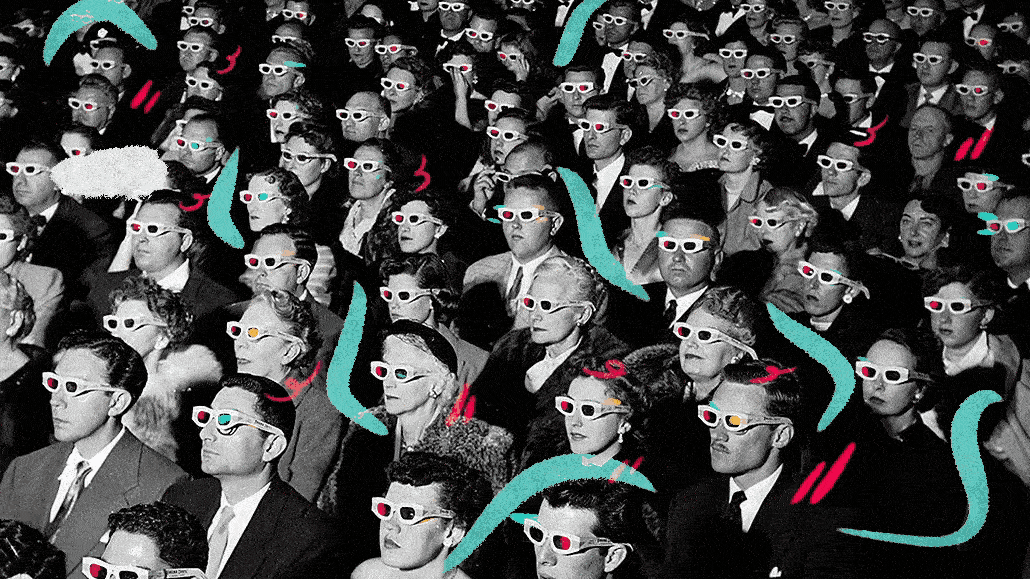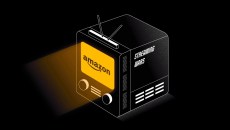
Amazon’s pitch to the market has traditionally relied on its ability to appeal to Madison Avenue’s rational side, with sales decks that heavily emphasize data targeting and demonstrable ROI.
However, earlier this week, at its upfront debut, Amazon added some showbiz glamor to the pitch with the unveiling of multiple pieces of programming, which some interpret as an effort to shore up its inventory supply challenges.
Amazon’s upfront presentation on May 14 was heavy on the content and relatively light on ad tech announcements, with company executives mostly stressing the depth and range of Amazon’s content portfolio across Prime Video, live sports and Twitch.
Tanner Elton, Amazon vp of U.S. advertising sales, took to the stage to discuss how this content push would help support the company’s broader advertising and e-commerce ecosystem.
“This week, you’re going to hear lots of presentations, and everyone’s going to talk about their reach, their audience insights, measurement capabilities, and, of course, their content,” he said. “Here’s the critical difference: We’re not just an entertainment company trying to monetize our shows with the latest ad tech or third-party audience signals. This is Amazon, the place where those customers come to shop and do so much more.”
Indeed, the e-commerce giant has been making waves in recent weeks with its ambitious plans to expand its marketing services empire. For example, according to its most recent earnings filing, its advertising division saw revenue increase 24% year on year in Q1 to hit $11.6 billion.
Such increases are largely seen as the result of recently introduced updates by Amazon Advertising, including earlier enhancements to its data clean room and demand-side platform and more recently launched new ad formats, developments that have piqued the interests of adland.
New programming
Amazon’s May 14 upfront presentation emphasized its efforts to generate scaled audiences by unveiling series such as “Noir,” starring Nicolas Cage, as well as a host of sports documentaries such as “Federer: Twelve Final Days.”
Furthermore, Amazon also unveiled additional seasons to established properties, such as “The Lord of the Rings: The Rings of Power,” and forays into unscripted formats with offerings such as “Buy It Now,” fronted by JB Smoove.
“Only Amazon has the ability to dive into IP and spark new obsessions across books, podcasts, music, fashion and games,” said head of Amazon MGM Studios Jennifer Salke during the upfront presentation. “No other studio offers creators so many ways to engage with an audience, and this has made Amazon MGM Studios the home for talent.”
The scale of Amazon’s designs on the upfront season–where advertisers and TV networks have traditionally sewn up most of the ad space for the remaining year–was arguably presaged with the January announcement of an ad-supported tier Amazon Prime Video.
“Those aren’t just any viewers, they’re Prime subscribers,” said Elton during the presentation, referring to an earlier announcement that Prime Video boasted 115 million ad-supported viewers. “In many cases, they don’t watch other streaming services or linear TV. They’re younger, they’re more engaged and they shop more — a lot more.”
Mixed reviews
However, speaking recently with Digiday, media agency buyers have mixed reviews of Amazon Prime. While some felt Amazon priced itself more reasonably than Netflix, others reported inflexibility when it comes to purchasing individual shows as well as somewhat of a slow reaction to buyer requests.
One holding company executive, who requested anonymity in return for candor, told Digiday last month, “They came in hot with a huge ask of incremental spend in addition to their STV [define] offering… Their CPM was OK, but not great.
“And now with CTV CPMs falling fast… they are still positioning a massive ask in this year’s upfront without disclosing what their monthly numbers actually are.”
A key propellant to Amazon’s rise in adland has been its ability to offer media buyers insights into e-commerce behaviors at scale. Such abilities have propelled its Amazon Ads unit to rival Facebook and Google’s dual hegemony of the online advertising market in recent years.
In an increasingly privacy-conscious world, this has been facilitated by developing cleanroom services for both buy- and sell-side offerings, a.k.a. Amazon Marketing Cloud and Amazon Publisher Cloud.
Earlier this month, the e-commerce giant further demonstrated the scale of its ambitions by announcing a tie-up with NCS Solutions to better help CPG brands assess how their online ad spend can help bolster offline sales.
Dealmaking activity
Additionally, Amazon has been developing its DSP offering in recent months by enhancing its integration with supply-side platforms. According to Digiday sources, this essentially translates into striking deals with ad tech vendors to secure special pricing in exchange for preferential treatment.
Furthermore, it recently launched Performance+, a feature within the Amazon DSP geared towards driving specific ad campaign goals such as awareness or conversions. Given its use of a mixture of first-party data signals and machine learning, some have likened Performance+ to Google’s Performance Max.
However, not every foray into the media and marketing landscape has been without an element of trial and error. After all, the company confirmed that it would sunset its attempts to rival Google in the buy-side ad-serving sector with the closure of Sizmek.
Meanwhile, a recent poll of Digiday readers hinted that it has work to do when increasing its share of the DSP market with just 5% of respondents claiming Amazon was their preferred DSP — if they could only select one.
More in Media

From sidelines to spotlight: Esports events are putting creators center stage
Esports events’ embrace of content creators reflects advertisers’ changing priorities across both gaming and the wider culture. In the past, marketers viewed esports as one of the best ways to reach gamers. In 2025, brands are instead prioritizing creators in their outreach to audiences across demographics and interest areas, including gaming.

Condé Nast and Hearst strike Amazon AI licensing deals for Rufus
Condé Nast and Hearst have joined the New York Times in signing a licensing deal with Amazon for its AI-powered shopping assistant Rufus.

Media Briefing: AI payouts may be entering a new era
AI compensation is evolving — and new models, not just publisher demands, are driving the shift beyond flat-fee licensing.








